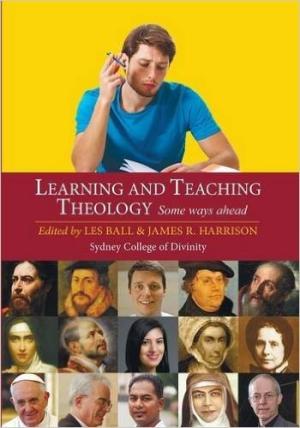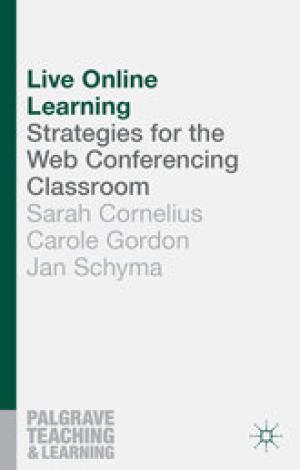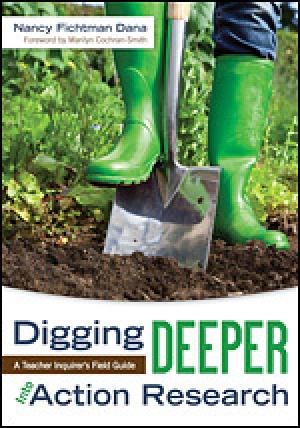Resources by Arch Chee Keen Wong

The final report of Canada’s Truth and Reconciliation Commission led by Justice Murray Sinclair, on the tragic impacts of Indian Residential Schools, was released in 2015. It included 94 Calls to Action, with several of these Calls relating directly to higher education. For instance, Call to Action number 62 urges postsecondary institutions to educate teachers on how to integrate Indigenous knowledge and teaching methods into classrooms. One way to begin addressing integration has to do with unsettling settler colonial worldviews, histories, and perspectives. How might this unsettling be done in a good way? Mi’kmaw Elder Albert Marshall states that Two-Eyed Seeing is “To see from one eye with the strengths of Indigenous ways of knowing, and to see from the other eye with the strengths of Western ways of knowing, and to use both of these eyes together” ( 2012, 335). In using both eyes, my students and I need to locate ourselves in own stories of identification in the classroom. I would like to be aware, and I want my students to be especially aware, of the issues and history of self-identification. According to Anuik, “Self-identification has an impact on teachers’ practices, and understanding how people identify can help teachers to adapt learning environments to meet their needs” (2019, 107). One way to get at this is through stories of identification—my own and my students.’ I ask my students to identify two labels that others at school had used to describe them in the past. I then share my two identifiers and tell my story about teacher judgement and a school system’s misjudgment of an assessment. If one aspect of an indigenous way of knowing is about relationality and building relationships of trust with my students, it requires me to be vulnerable with my story. So, when I was in third grade, I brought home a report card that ranked me “below average” in relation to my peers. A row of failing grades ran down the report card beside each topic. The report card generated a meeting between my parents, the teacher, and the principal and a series of assessments. The meeting with my parents was awkward because my parents didn’t speak or understand English very well, and the principal wanted to meet after school and my parents, who worked at a Chinese restaurant, had to take time off to visit the school. The test results indicated that I was a slow learner (I didn’t understand and speak English very well) and may have a cognitive impairment. I knew this verdict made me different from my peers. I thought that every kid at school knew about my issue, and I felt shame. My parents felt shame as well because they came to Canada to make a better life for their children. I mixed up the assessment results with being stupid—what else was I to think since my report card showed that! I chose to disengage. If I stayed quiet, then no one would suspect I had an intelligence issue; I didn’t participate in class even if I knew the answers better than my peers. My style carried me through to grade 8, when my enthusiastic gym teacher said I was very quiet and needed to speak out more in class. That early assessment and teacher’s judgements failed me. As a child, I feared that if my teachers said I had a cognitive issue, then they would treat me differently than my peers—if only they knew where I am today! I then ask my students to look at their identifiers and ask if they accurately represent who they thought they were? In most cases, they were an inaccurate representation of who they thought they were. I show them this diagram: Discussing this diagram allows my students to begin to understand that indigenous students have identities conditioned by Canadian legislation which was historically rooted. Naming students “Indian” or “Aboriginal” had a negative impact because being labelled one or the other triggered fear that an educator would throw the student into a box that held a collection of negative stereotypes or misinterpretations of a person that needed to be fixed. How might I move this further with self-identification? Going back to Mi’kmaw Elder Albert Marshall’s concept of Two-Eyed Seeing has been a helpful way to reflect on my own teaching practices and course design, and the ways that they might impact my students’ own identity and spiritual formation as they move out into the wider world after graduation. For myself, I wonder at times if I simultaneously need a third eye to think and voice more creatively an Asian way of knowing as well? References Anuik, J. 2019. “If You Say I am Indian, What Will You Do? History and Self-Identification at Humanity’s Intersection.” In Knowing the Past, Facing the Future: Indigenous Education in Canada, edited by S. Carr-Stewart, 106-117. Vancouver, BC: Purich Books. Bartlett, C., Marshall, M., and Marshall, A. 2012. “Two-Eyed Seeing and Other Lessons Learned Within a Co-Learning Journey of Bringing Together Indigenous and Mainstream Knowledges and Ways of Knowing.” Journal of Environmental Studies and Sciences 2(4): 331-340. https://doi.org/10.1007/s13412-012-0086-8.

A pedagogical community consists of at least three elements: the student, the professor, and the subject. The intersection of these three elements has the potential to create what Parker Palmer (1998) calls “a community of truth.” In order to create this community of truth in an online course, the instructor has to consider in the design of the course where community happens, so that students can begin to “know one another.” One of the best, and perhaps most difficult, places to start is at the beginning of the course. For a number of years, the start of my online courses were, quite frankly, boring and not very engaging for students. This, in turn, caused a lot of angst in me, the instructor. As I shared my dilemma with a colleague, she suggested, “Why don’t you make an assignment in the first week to produce a video about you and have each student in the course do likewise?” I started to do that at the beginning of each of my online courses and that advice from my colleague has helped me and my students begin to “know one another.” Below are the instructions that I put in the syllabus for this assignment. I have found that it is doable even for students who have technological challenges. There are many apps/software out there; I use an app/software called Animoto. It’s easy to use, it provides choices of background and music, and it’s free! Purpose: An introduction is often your best chance to establish yourself as a distinct individual with something unique to offer the world. Most people default to the standard, “Hi my name is . . . I live in . . . I work at . . .” For this assignment, you will move beyond such a standard introduction and create a 1 minute and 30 second (minimum) Animoto about you. You will also write a short paragraph to accompany the video. While a resume is a professional document, consider how an Animoto can be an innovative way of conveying the same information. What sort of audience would prefer this format? Instructions: Step 1: Start by establishing the essential information you think should be included when introducing yourself to others. Obviously, your full name is important, but you may also include your age, your field of study, ethnicity, home town, hobbies, some details of past experience, accomplishments, future goals, etc. Step 2: For this assignment you must consider appropriate images and music that will highlight information about you while maintaining a professional look. Draft a few ideas, sort through your photographs, or Google images and arrange the “story.” Step 3: Write a text that highlights the images and/or helps put them in the proper context. Step 4: Select the music that best reflects the image of yourself that you want to send out to the world. You may want to select the music first and let the rhythm and lyrics guide your story. Submission guidelines: Post your biographical Animoto and paragraph to the Introduction Forum. You must watch all the Animotos and respond to at least three other Animotos (not the instructor’s). Your responses should be thoughtful, constructive, and more than one sentence. Comment on similarities, differences, enquiries, wonderings. What makes this first assignment most interesting for me are the comments from the students to one another’s Animoto and short paragraphs in the discussion forums. The curiosity that students have for one another is gold! The benefit: the course begins on an encouraging note that helps students be more transparent and authentic with one another in a way that helps build positive momentum for the course. I’m sure there are many good ways to start off a course right that builds pedagogical community—this is just one that has been tremendously helpful to me. (You can click and watch my academic Animoto (https://animoto.com/play/Zh0oXpqBBZt61q0kvx7h6w) which shows where I went to school, where I teach, and a bit about my family. )

The genesis of this book was a Learning and Teaching conference held at the Sydney College of Divinity that focused on issues and practices in theological education from the perspective of Australia and New Zealand. The aim of the book is to “generate further impetus in charting effective ways to make progress along the important journey of delivering relevant contemporary educational experiences for the learners of theology” (7). For the most part the book succeeds in doing this. It contains seven sections. Section 1, and in particular the essay “Where are We Going,” sets the stage well for the other essays and sections of the book. This essay argues that the philosophical starting point for theological education is student-centered learning and teaching. This pedagogical philosophy then answers the questions about what shall be taught (content of theological learning and teaching), how it will be taught (methods of learning and teaching), and how the curriculum is built. Section 2 gives a biblical road map, using the apostle Paul as a model of a theological educator, that centers on learning communities and their effects on the immediate context and implications for theological education today. Section 3 constitutes a strength of the book since it brings together the philosophical, curricular, and theological theories about learning and teaching into an integrative whole connected to formational assessment. The various essays are informed by the works of David Ford and Walter Brueggemann, integrative and transformative learning theories, and multiple intelligences, to name a few. The book transitions in Sections 4 and 5 to a more practical focus that brings theory and practice together from the medical and health science disciplines to enhance theological education, and the use of technology. The two essays in Section 4 look at lessons that theological education can learn from medical education; they challenge theological education to move from an emphasis on competencies to a focus on capabilities that adapt to contextual changes that in turn improve ministerial practice. The essays in Section 5 center on e-learning technologies and its impact on the learner from formational, instructional design, gamification, and embodiment perspectives. The last two sections continue to emphasize practice and give creative examples of innovative practices from theological practitioners around teaching and learning methodologies. These include problem-based learning, transformative pedagogy in the context of cross-cultural experiences and traditional courses, and workplace formation. The last two essays feature teaching and learning from a non-Western context. The editors laid out the direction of the book well in that it generally moves from a theological, philosophical, and pedagogical core to learning and teaching practices. However, in a book of this nature with multiple authors, there is an unevenness in the depths of the essays. That is, some essays give excellent theoretical depth and description, fresh analysis of data, creative accounts of practice that oftentimes challenges the theological status quo, or thoughtful theological and pedagogical integration, while other essays do not. Having said this, the book does present fresh thinking and offers innovative practices about the theological education enterprise and as a result urges continual and effective development.

For many reasons, universities and seminaries are asking faculty to teach more courses online. As a result, professors are ever vigilant for online strategies and tools that could help them with communication, interaction, and live online collaboration between professor and learners, learner and learner, and learners and course content. For professors in religious studies and theology who want to or are required to teach live online, this book is a good place to start. Based on years of research and experience, Cornelius, Gordon, and Schyma propose best practice guidelines in using web conferencing technology and provide helpful tips for teaching that is learner centered. Each of the ten chapters begins with an outline and concludes with a helpful summary. The usefulness of this book is its breadth in the coverage of materials for teaching in a web conference classroom. Chapter 1 covers creating the virtual classroom environment by using web conferencing technology to create the learning space that inspires learning and teaching. Chapters 2 to 8 follow, in a logical manner, the actual design of a live online course and cover preparation to teach in a virtual classroom, welcoming students to the virtual classroom, bringing professor and students together to the learning space, engaging learners, gaining feedback, helping learners work together, and assessing for learning. The authors conclude in chapters 9 and 10 with thoughts and tools to help professors assess their skills in the live online teaching environment and creative and inclusive ways of using web conferencing technology to support diverse groups of learners. Within each chapter there is a wealth of information and practical suggestions. From the beginning to the end the authors cover topics and practices such as: creating learning space, strategies to inspire students and professor, exploring the technology, planning live online sessions, building trust and rapport, engaging learners through activities, collaboration and group work, effective group activities, and student centered assessment. For instance, chapter 5 provides a good example of the breadth of information as it relates to engaging learners. The authors explain the importance of engaging learners; give examples of activities that can be used in any context, followed by step-by-step practical ways to introduce learning activities and activities that maintain student engagement. What is further helpful in this chapter and each of the chapters in the book is the way the authors cleverly interweave their narrative with actual teaching and learning experiences from teachers and learners that gives genuineness to the teaching and learning situation. In summary, Live Online Learning Strategies for the Web Conferencing Classroom succeedsbecause of thebreadth of information and depth of its application. Because it is written in non-technical language, this book will be especially helpful for new instructors who are beginning to teach online live. Its focus on teaching and learning issues and student-centered learning is a welcomed resource. w

Although targeted mainly to K-12 teachers, this short and easy to read book is helpful and could serve as a companion to professors of religious studies and theology who want to better their understanding of action research for improving classroom instruction. The ideas and principles presented in the book are not difficult to translate into higher education classroom contexts. The book consists of six chapters and begins with defining teacher research and framing the research question. Dana provides five “wondering” questions for teachers to consider: (1) Is your wondering something you are passionate about? (2) Is your wondering focused on student learning? (3) Is your wondering a real question? (4) Is your wondering focused on your practice? and (5) Is your wondering phrased as a dichotomous (yes/no) question? The author then illustrates how to reframe these initial wonderings into pointed inquiry. She believes that good ideas and thought-provoking questions can only flourish through methodical inquiry. The book ends with two chapters that are concerned with ways to present inquiry-based research to colleagues and help them to improve their own teaching and research practices. In the chapters that fall between them, Dana discusses ways to fine-tune the research plan in chapter 3 and how to analyze data in chapter 4. Chapter 3 focuses on fine-tuning the research plan, and asks a number of pointed and useful questions that would be relevant for university, college, and seminary professors: (1) Does your data collection strategies align with your wondering and all other aspects of your inquiry plan? (2) Are you using multiple forms of data to gain insight into your wondering? (3) Does one of the forms of data you will collect include literature and/or have you already used literature to frame your wondering? (4) Is the design of your study experimental? In chapter 4, Dana distinguishes between formative and summative data analysis by giving real life vignettes from the field and also provides practical ways to avoid data analysis paralysis by way of self-guided worksheets. This might be helpful for those seeking to link teaching goals with outcomes and assessment strategies. Throughout the book, Dana inspires, reminds, and finally guides the reader through an action research process. As a result of going through this research process, readers are escorted through the process of improving their own pedagogical practices, “studying your practice empowers you to: engage learners, enable other professionals to learn from you, expand the knowledge base for teaching, express your individual identity as a teacher, and embrace all the rich complexity inherent in the act of teaching and learning” (80). This book might initially overwhelm professors of religious studies and theology if they have not read in practitioner action research or have not used action research to improve their own pedagogical practices. However, for those with some experience using action research as a strategy for teaching, this book is a welcome resource to help improve teaching and learning practices in the classroom.